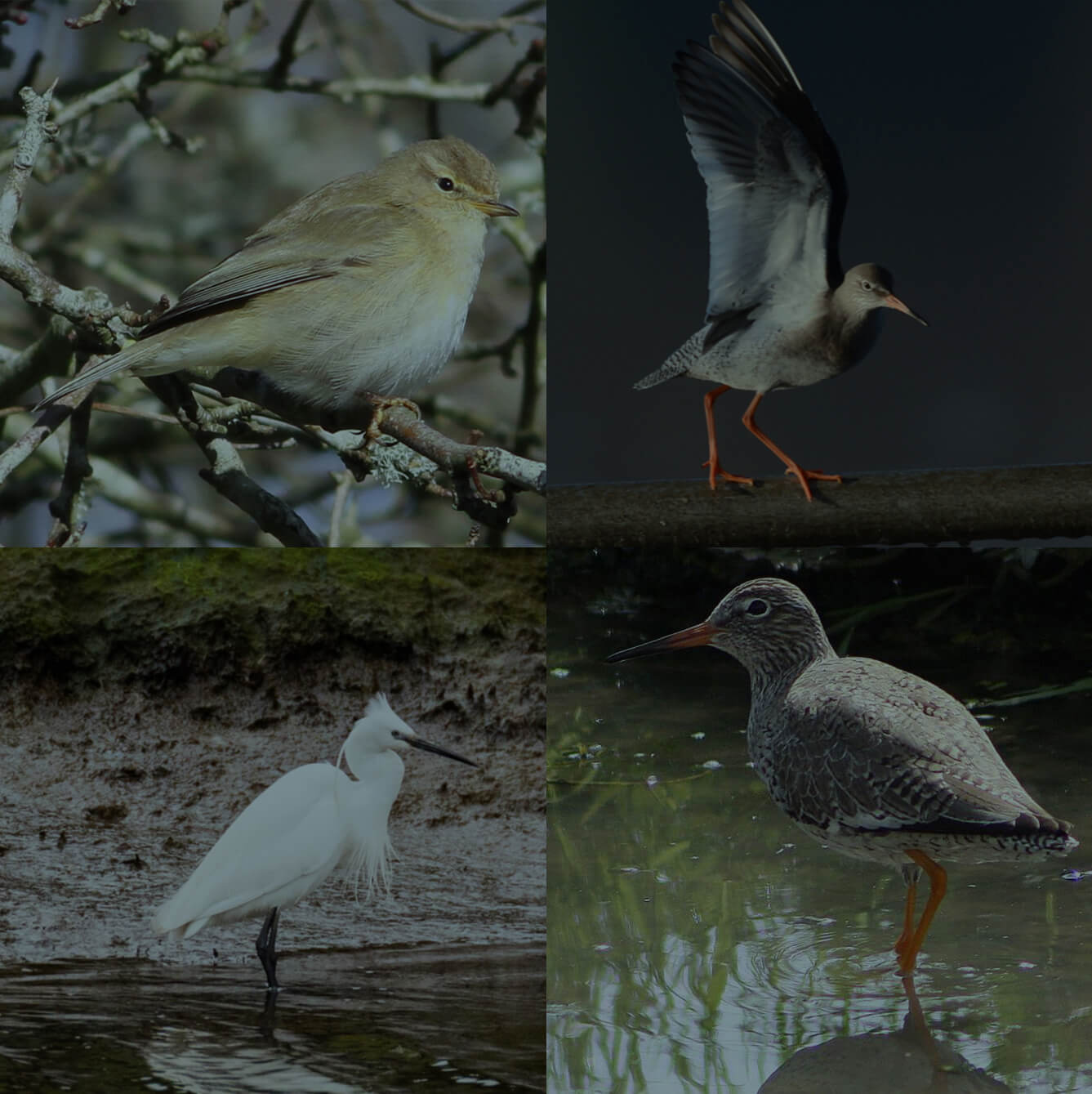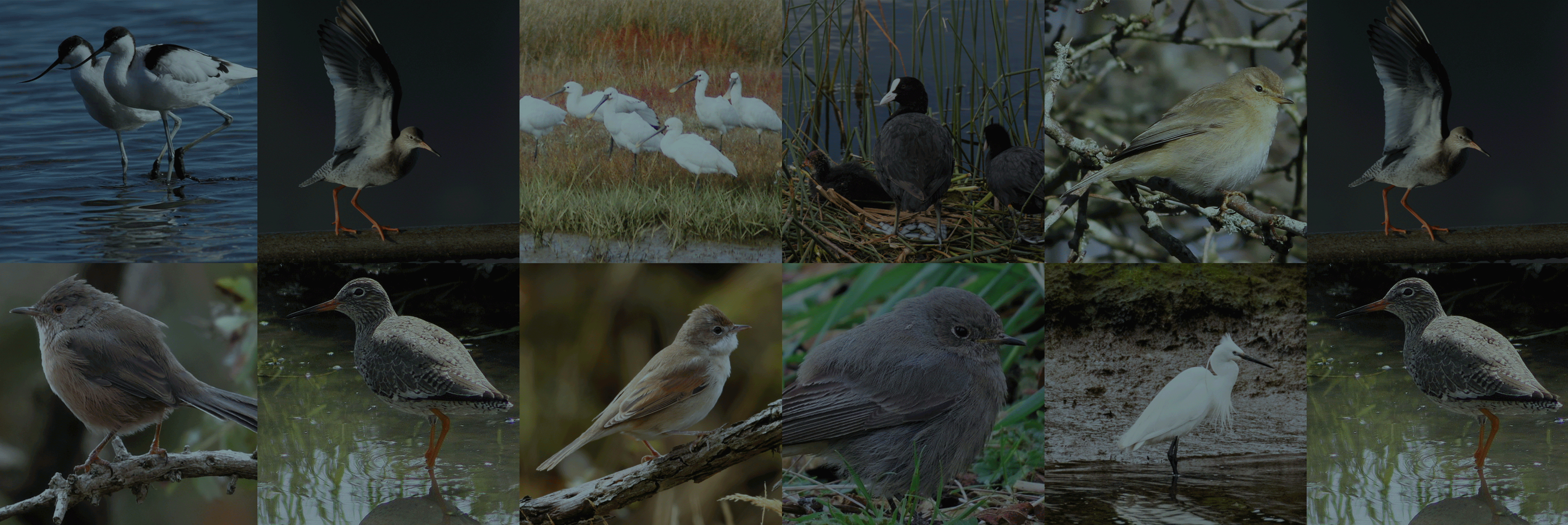An official account of all species that have been recorded and reported by birdwatchers and naturalists in the Poole Harbour area since records began.
The data for this list has been extracted from various sources, but George Greens 'The Birds of Dorset', Mansel-Pleydell's Birds of Dorsetshire, Naylor’s reference manual of rare birds and the back catalogue of Dorset bird reports have provided most information. Data is currently still being researched and records will be updated accordingly.
You can view this information in two different ways. Our alphabetical list provides information on the status of each species within the harbour, finder dates and names, photos and favoured locations. By clicking on the Systematic List button you will be presented the full Poole Harbour systematic list which includes status of species, pending records and historical accounts.
To date, 333 species have occurred and have been accepted within the Birds of Poole Harbour boundaries. A further 11 distinct subspecies have also been seen. In addition, we have two species/subspecies which have been recorded, but are awaiting acceptance by the appropriate records panel.
There are a handful of historical records, for which there is currently insufficient information to allow their inclusion onto the Poole Harbour list, but are believed to be genuine records. They are listed at the end of the list.
Finally, there are a number of feral or escaped species that have been recorded within the Birds of Poole Harbour boundaries. They are included for completeness, but are not included on the Poole Harbour list.
We would be interested in hearing details of any species that do not appeared on this list.
The Birds of Poole Harbour systematic list is a PDF which you can view by clicking on the button below. It was last updated on December 2019.
Full Poole Harbour Systematic List
Common Gull
Latin Name
Larus canus
Status
Resident
Site And Records Information
Numbers build through the autumn starting in October and increasing towards December. Otherwise present all year in the harbour in tens rather than thousands, with less records from May to July. The Wareham channel, Poole Park, Lytchett Bay and Holes Bay on a low tide hold good numbers in the winter. The winter roost in Wareham Channel can be huge as large numbers build up then pass through the harbour in February and March on their way to Norway and Sweden.
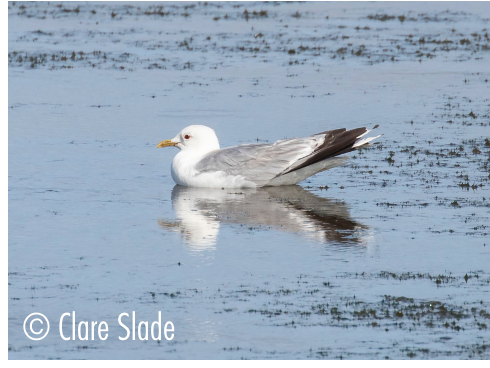
Common Nighthawk
Latin Name
Chordeiles minor
Status
Vagrant
Site And Records Information
Likely to never occur again, or certainly not any time soon this amazing record still fills many local birders with envy.
1 at 11 a.m. on 23rd Oct 1983 at Studland Village (M.Massey, K.Massey, M.Howard). BB mistakenly published the date as the 25th Oct.
Common Rosefinch
Latin Name
Carpodacus erythrinus
Status
Vagrant
Site And Records Information
A remarkable first Poole Harbour record, feeding in an urban garden on sunflower hearts and mixed seed. Surely some more records will follow this one, albeit in a perhaps more traditional habitat and location.
1 from 28th Jan to at least 10th Apr 2013 in a Broadstone garden (E. Brodie et al). A remarkable first Poole Harbour record, feeding in an urban garden on sunflower hearts and mixed seed.
Common Sandpiper
Latin Name
Actitis hypoleucos
Status
Passage Migrant & Winter Visitor
Site And Records Information
Birds pass through the harbour in spring and autumn. Autumn passage actually begins during mid summer with the Brownsea lagoon, Lytchett Fields, Holton Pools and Holes Bay being hotspots, it’s also at this time that the maximum site count of 27 was at Studland on 29th July 1988 and the harbour maximum of 47 was in August 1990. Birds can be found at any quiet tidal bay or creek but Lytchett Bay, Brands Bay, Middlebere and Swineham all host birds.
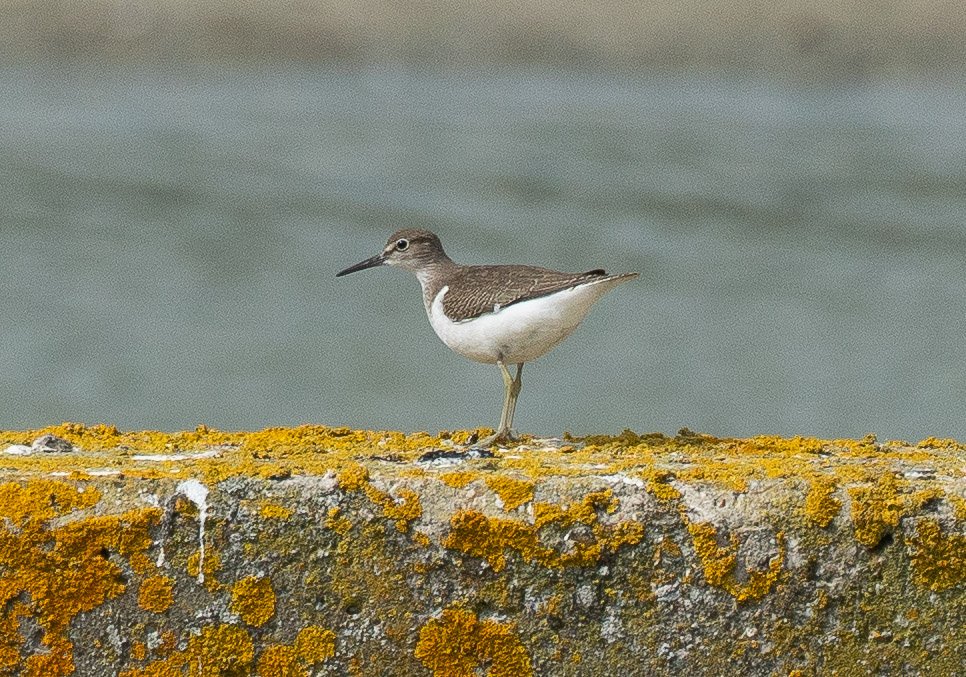
Common Scoter
Latin Name
Melanitta nigra
Status
Passage Migrant & Winter Visitor
Site And Records Information
Pre 1960 large flocks of Common Scoter used to gather in Poole Bay and included 100+ in 1958. A J Bull wrote in the 1958 Bird Report that there were “large gatherings on a scale not recently recorded in Poole Bay with up to 1000 on March 20th. All gone by the next day.” Unsurprisingly this is the maximum count for the harbour. In the late 1990’s around 20 birds was a more typical count. Otherwise odd birds were found in the Balls Lake area of the harbour, in Brands Bay and off Ham Park.
More recently Common Scoter numbers have stayed pretty stable with between 3-10 present each year and the last 5-year average being five per winter. Common Scoter are best looked for off Knoll and Middle Beach, Studland or in the south east corner of the harbour at sites like Brands Bay, Goathorn or central harbour.
Passage birds are noted annually past Branksome and Old Harry and on good days can reach double figures.
Most recently (and amazingly), it’s been discovered that there’s an annual night migration of Common Scoter in the early spring and late Autumn. On a calm night in late March or early April passings of Common Scoter have been sound recorded and seen with thermal imaging equipment tracking north over the harbour and heading in land, allowing keen birders the opportunity to ‘tick’ Common Scoter on their garden lists by listening carefully. Extraordinary!
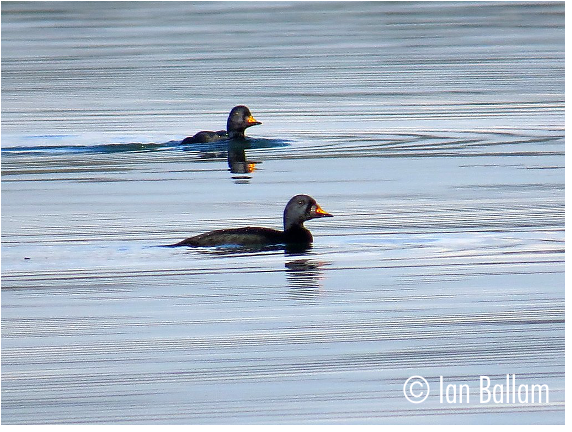
Common Tern
Latin Name
Sterna hirundo
Status
Summer Visitor & Passage Migrant
Site And Records Information
Brownsea is the only breeding site in the harbour for Common Tern. They outnumber the Sandwich Tern but both can be seen heading out of the harbour mouth to feed amongst the swimmers and yacht’s. Common Terns first bred in the harbour in 1951 and immediately populated the Dorset National Trusts tern islands when they were built in 1963. Eight pairs bred then and this built to 90 pairs in 1970. Numbers continued to rise and in 1990 when the Brownsea breeding colony reached 130 pairs and was classified of National importance. In 1997 pairs on nests reached 173 but heavy rain caused damage. In 2012 pairs bred, but only 1 chick fledged! There was a remarkable ringing recovery in 2000 involving a bird ringed at Brownsea in 1999 and found in Cape Province, South Africa after being hit by a train along with 45 other terns.
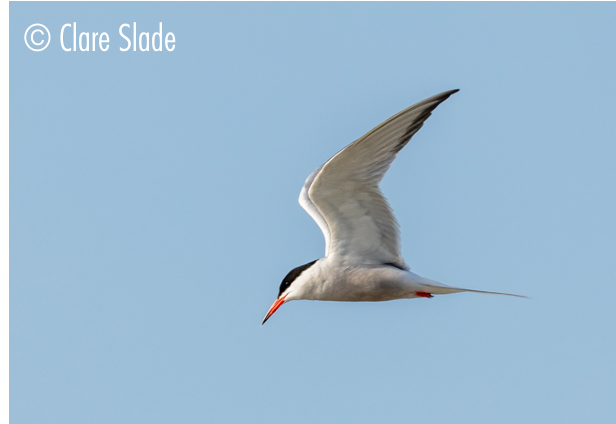
Continental Cormorant
Latin Name
Phalacrocorax carbo sinensis
Status
Passage Migrant & Winter Visitor
Site And Records Information
Sinensis’ (continental) Cormorant are known to be more migratory than ‘carbo’ with juveniles dispersing long distances within two months of fledging in June, and what appear to be juvenile sinensis are in large numbers on Brownsea in August and September.
Sinensis are known to be more migratory than carbo Cormorants with juveniles dispersing long distances within two months of fledging in June, and what appear to be juvenile sinensis are in large numbers on Brownsea in August and September. Maybe significant numbers of European migrants of this taxa are mixing with the dispersing carbo’s from the west of England, Wales and Ireland as they move to the east of England and this creates a peak. The identification of some birds is still very difficult and is not helped by this species habit of never sitting still and allowing careful study of the shape of the gular area. Using the gular patch alone is thought to enable eighty percent of sinensis to be identified. Whether sinensis breed in the area is not known, but birds breeding inland should be checked as they are most likely to be this type.
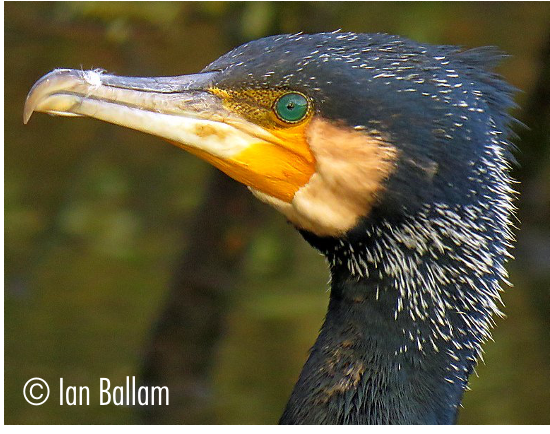
Continental Lesser Black-backed Gull
Latin Name
Larus fuscus intermedius
Status
Scarce Passage Migrant
Coot
Latin Name
Fulica atra
Status
Resident
Site And Records Information
Coot breed at certain sites like Hatch Pond, Little Sea, Poole Park, Hatch Pond and Swineham. Numbers can swell during the winter with many birds at Poole Park, but can remain very scarce in certain areas throughout the harbour. There was a 650+ in Poole Harbour during the cold spell Feb 1963 and the average 5 year peak between 2014 and 2019 is 222.
It’s also recently been discovered that just like Water Rail and Moorhen, Coot are very active at night, calling frequently above the harbour as they transit or migrate across from one site to another, or arrive from areas much further afield. They may also do these regular night flights to simply to defend a territory too. Coot can be extremely rare in some areas of Poole Harbour, take Lytchett Bay for example where there have been less than 5 visual records in the last 5 years (2015-2020), however, stick a microphone out at night and you can record Coot calling directly over the microphone every single night!
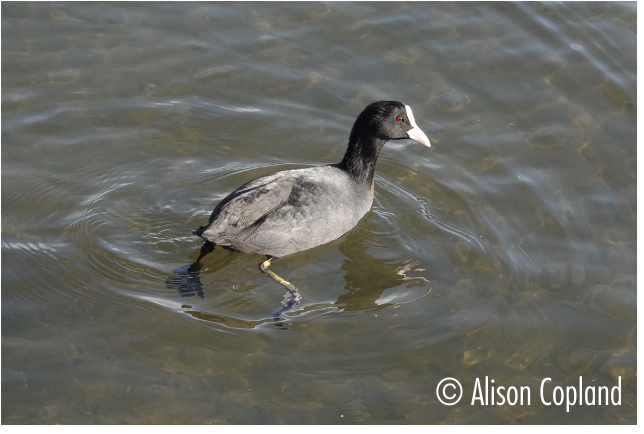
Cormorant
Latin Name
Phalacrocorax carbo
Status
Resident
Site And Records Information
Poole Harbour is nationally important passage and wintering area for ‘carbo’ Cormorant with over 3% of the British population. Breeding takes place on the cliffs of Ballard Down with a historical maximum count of 172 nests, but only 86 nests were counted in 1999 and 57 in 2003. It’s thought now that breeding totals are now in the low double figures. This species is common at many sites around the harbour later in the year but numbers increase in autumn and winter where they’ll occasionally join the large rafts of up to 700 ‘sinensis‘ Cormorants that feed in the deep channels off Shipstal, Brownsea and the Wareham Channel. Continental ‘Sinensis‘ Cormorants are known to be more migratory than ‘carbo’ with juveniles dispersing long distances within two months of fledging in June, and what appear to be juvenile sinensis are in large numbers on Brownsea in August and September. Large rafts of up to 700 sinensis Cormorant can occur by late October, feeding as one unit out in the centre of the harbour.
In 1966 John Ash recorded that on “13th February, three of the southern race flew out with 80 of the usual race.” While this is the first documented record for the harbour, Britain’s first record was in Christchurch in 1873, so it had probably been sneaking round well before that. Now Cormorants of this continental race sinensis seem to have increased in the harbour over the last 30 years mirroring a similar increase across the whole of eastern and southern England. Spring adults are conspicuous and can be seen in the Wareham channel or on the Brownsea Lagoon.
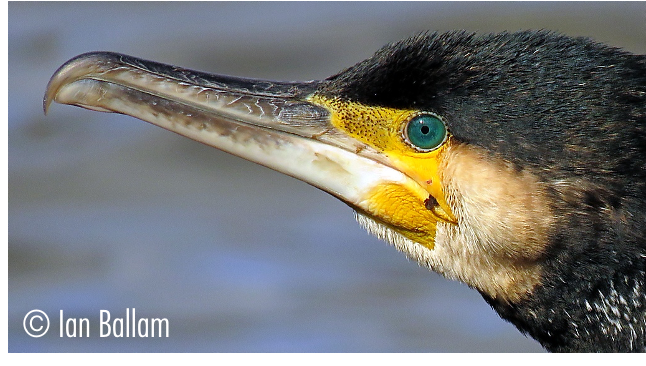
Corn Bunting
Status
Former Resident, now Rare Visitor
Site And Records Information
The 1968-72 Atlas found that the species was widely distributed across Dorset including parts of Poole Harbour. In Jan 1963 up to 17 were attracted to corn put out for waterfowl at One Acre Pool, Studland. This was during the prolonged freeze in that famous winter. A significant decline began in the 1970’s and continued until the mid-90’s. Looks like the best hope now is a fly-over during a visible-migration watch or there just may be one in a winter finch and bunting flock?
Corncrake
Latin Name
Crex crex
Status
Vagrant
Site And Records Information
Like the rest of the country, Corncrake was at one time a common summer resident but started to disappear around 1900. By 1950 it had virtually ceased to breed in Dorset. Since then only migrants have been found. There are 9 records since 1958 but none for 19 years. Most ‘recently’…..
1 an immature male (“sexed by dissection”) being found dead by Mike Tuck outside Studland P.O. on 8th September 1966.
1, possibly 2, on 16th Apr 1970 calling at Fitzworth Creek, Corfe River.
1 male found dead on 10th Sep 1970 at Studland
1 on 25th Sep 1996 at Lytchett Bay was seen in flight as it was flushed from rank grass (S.Robson)
Crossbill
Latin Name
Loxia curvirostra
Status
Resident
Site And Records Information
Numbers of Crossbill around Poole Harbour are very much dependent on invasions. The actual underlying population which is centred around Rempstone heath is quite low, however irruptions are frequent and in those years they can be very common. In addition birds can also stay in the area for several years sometimes until the next invasion. Arne frequently hosts Crossbill in and around it’s pine areas. During August, September and October parties of Crossbill are on the move and can frequently be observed passing over head any habitat, but learning their contact/social calls in vital to their ID. Glebelands, South Haven and Ballard are best sites for hearing and seeing Crossbill on migration.
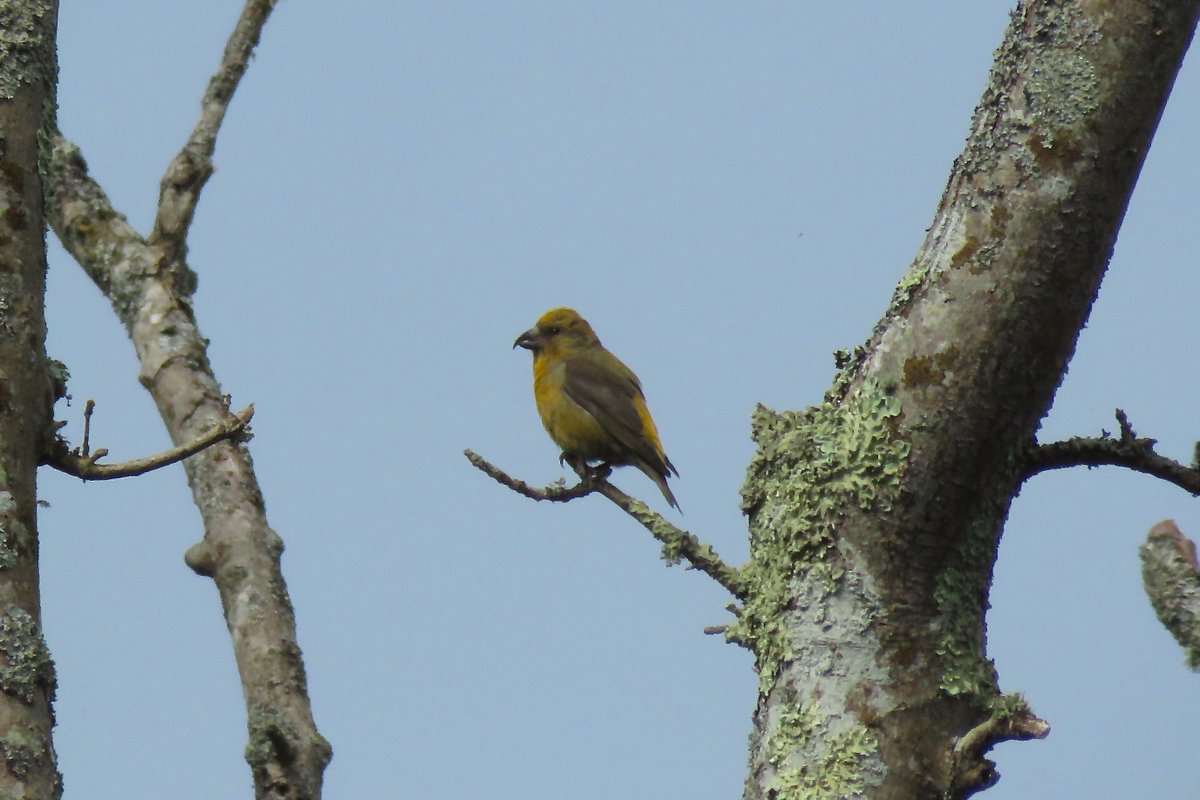
Cuckoo
Latin Name
Cuculus canorus
Status
Summer Visitor
Site And Records Information
Normally arrive mid to late April. The heathlands around the south and west of the harbour are good sites such as Coombe Heath (Arne), Middlebere, Stoborough Heath, Hartland Moor and Godlingston Heath. They can be heard through the day and night, especially moonlit nights until around late June and the adults are still around until mid July although harder to spot once they stop calling. The large number of nesting Reed Warblers would suggest that the harbour is a good breeding area however records of juveniles only occur once or twice a year.
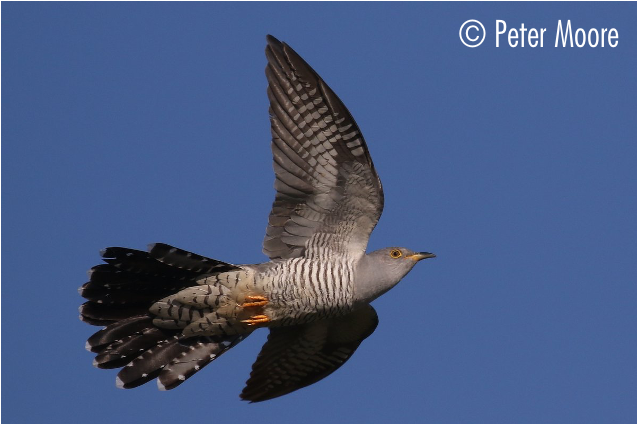
Curlew
Latin Name
Numenius arquata
Status
Resident
Site And Records Information
Common throughout the harbour, especially during the winter. Large gatherings of up to 300 birds can be seen from the RSPB hide at Shipstal. Harbour maximums can reach up to 2000 with an almost equal spread throughout the southern and western bays. There has been proved breeding on Upton Heath in 1981 and 82 and they have been heard singing on Hartland Moor in breeding season too. Ringing recoveries show most of our wintering birds are from either, Sweden, Finland, Germany or the Netherlands. On a low tide during the winter Curlew can be found on almost any exposed mud around the harbour with Holes Bay, Brands Bay, Middlebere and Upton CP offering good views.
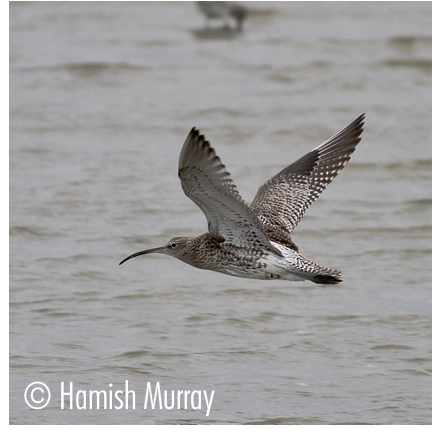
Curlew Sandpiper
Latin Name
Calidris ferruginea
Status
Passage Migrant
Site And Records Information
Most reliably seen on Brownsea lagoon, in Middlebere and at Lytchett Fields in September when small numbers of juveniles move through. The harbour maximum is 75 on Brownsea on 31st August 1969, and 60 there on 4th Sept 1986. Large flocks have also been seen on Baiter with a notable count of 47 on 12th-15th Sept 1993. Numbers like this are very rare nowadays but always worth keeping a eye out for small groups. In recent years (since 2013) the newly created wet fields at Lytchett Bay have become a regular site for this species each autumn and with the new visitor infrastructure at RSPB Lytchett Fields, views of this species have become a lot easier. Small numbers are frequent on the Brownsea Lagoon each autumn, often viewable from both DWT Hides.
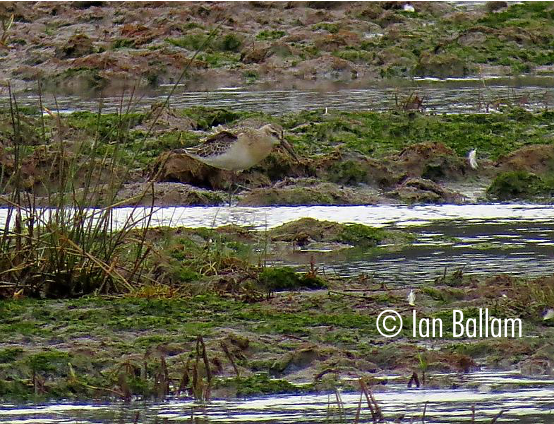
Dark-bellied Brent Goose
Latin Name
Branta bernicla
Status
Passage Migrant & Winter Visitor
Site And Records Information
Poole Harbour is Nationally important for this species, which arrive in October, feeding all around the harbour. They sometimes linger into the spring and during 2001, 2002, 2016 and 2017 (presumably sick) birds spent the summer in the harbour. Some idea of the numbers of Brent Geese that used to visit the harbour is conveyed by entries in Colonel Hawkers diary “the geese were in tens of thousands” in 1814 and “immense numbers” in 1823. Payne Gallwey, writing in 1890, commented on the rows of gunning punts on the beach and described Poole Harbour as being “one of the best grounds for wildfowl in the kingdom”. The birds started to disappear from the 1930’s and while the decline through parasitic micro organisms of the eel grass Zostera marina, their favourite food, may well have been a factor, hunting was probably to blame. By 1962 Alan Bromby, of Brownsea Island, wrote in Birds of Dorset that he was only counting “up to four in the harbour during January and ten there on 27th December.” By 1967 Dixon commented that “ the Brent Goose that was once common now only arrives in two’s and three’s as an occasional vagrant.”
Then as conservation bodies increased their control and shooting declined numbers started to rise again. By 1974 Tony Wise said, “the winter flock had reached 250 birds. In 1983 numbers had reached 550- 1,000 birds and between 1,300-1,700 birds during the 1990s. Enteromorpha and Ulva are the most important food sources
Now the best place to see the largest flocks are at Middlebere, Newton Bay and Baiter. Smaller flocks are at Evening Hill (where the last of the harbours zostera still grows), Studland Bay where some of the earliest returning migrants occur, and Brands Bay . The harbour maximum is of 2442 in January 2018. Birds often pass Branksome as the commute to and from other local feeding areas or are migrating to or from the Arctic where they breed.
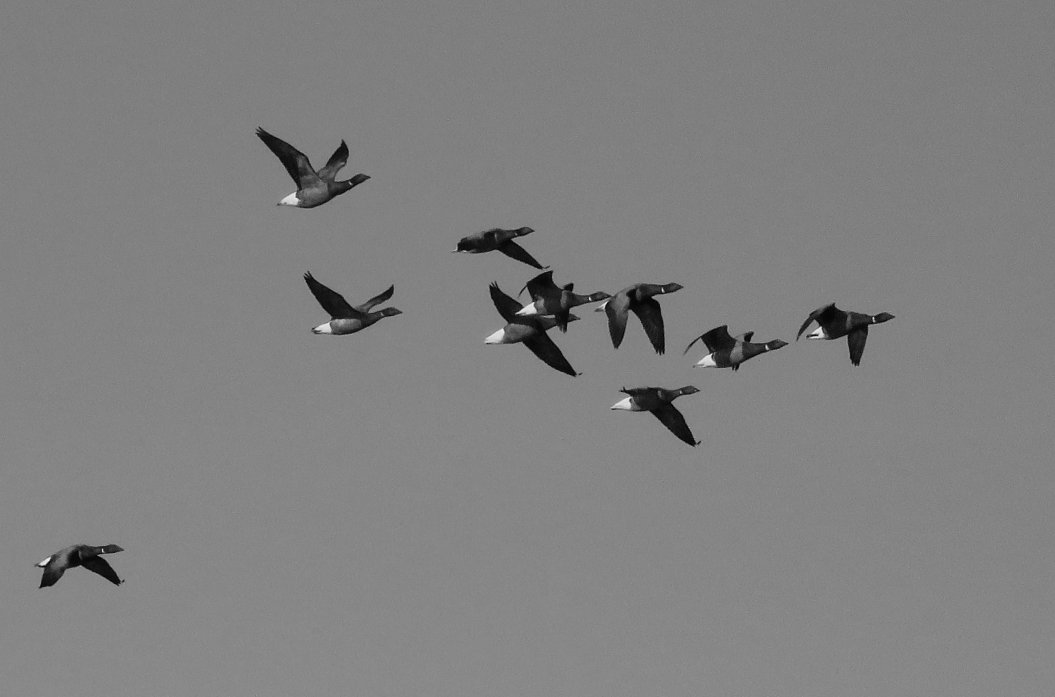
Dartford Warbler
Latin Name
Sylvia undata
Status
Resident
Site And Records Information
The last national survey conducted in 2006 found that Dorset had more Dartford’s than any other county with 754 pairs. Key Poole Harbour sites were Studland and Godlingston (46) and Arne (39). Despite a very cold winter in 2010/11 a survey at Arne in 2011 produced 52 pairs. Active heathland management has improved the quality of habitat for this species and thereby enhances and increases survival during harsh weather. Theoretically, all patches of heathland around the harbour should host Dartford Warbler, and many now do.
They did almost disappear completely though due to the severe winter of 1962/63, when the already rare Dartford Warbler was pushed to it’s limits and existence in the UK due to cold weather. Only a handful of pairs survived that bitterly cold period with an estimated 12 pairs left in Dorset including 4 pairs in and around the Arne Peninsular. When the RSPB took on Arne as a nature reserve in the mid-1960’s one of the main priorities was to re-build the population of Dartford Warbler here in Poole Harbour which they did incredibly well.
Their charismatic and often loud scratchy song is often the first clue to their presence, and with patience you can often be treated to stunning views of that classic image of a Dartford Warbler sitting on top of a gorse bush.
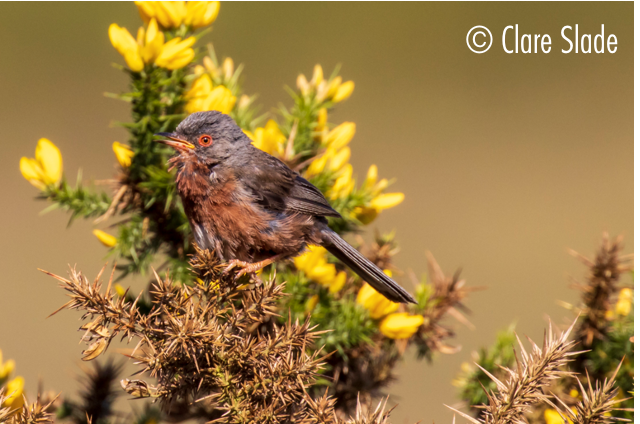
Desert Wheatear
Latin Name
Oenanthe deserti
Status
Vagrant
Site And Records Information
Rare wheatear species are much sought after birds in the autumn. In Poole Harbour only three species have been recorded with Black-eared Wheatear, Northern Wheatear and Desert Wheatear all on the Poole Harbour list. The latter has seen just one record at Studland which isn’t surprising considering the habitat looks great for a rare wheatear.
1 from 5th to 6th Mar 1997 at Knoll Beach, Studland (S.J.Morrison et al)
Dipper
Latin Name
Cinclus cinclus
Status
Vagrant
Site And Records Information
Formally bred in the early 1900’s, including at Wareham in 1913, this is now (along with Puffin) a highly sought after Poole Harbour bird. Possible places would be around the Frome, Piddle and Corfe Valley.
1 on 6th Mar 1997 at Corfe Castle (N.Grace)
1 on 20th Mar 2011 on The Piddle at Wareham seen during a kayaking trip (I.Alexander)
Dotterel
Latin Name
Charadrius morinellus
Status
Vagrant
Site And Records Information
Dotterel are a much sought after bird in Dorset, let alone Poole Harbour. With only 2 records for Poole Harbour it’s hoped that the ploughed fields around Ballard and Old Harry in the autumn will cater for a passing Dotterel in the coming years.
1 on 28th May 1953 at Shell Bay, Studland
1 on 12th Feb 1961 in ‘the inner harbour’. This bird might have overwintered as the date is too early for a returning migrant?
Dunlin
Latin Name
Calidris alpina
Status
Passage Migrant & Winter Visitor
Site And Records Information
The numbers of Dunlin wintering in Britain have been declining since the mid 90’s. Whereas the threshold for any one site being national importance was 5300, it is now 3500. The decrease in the UK has been matched with an increase in the Netherlands, probably as a result of climate change. This species is amber listed as a result of this decline.
Dunlin remains a common wader in the winter.
Numbers wintering in the harbour increased during the second part of the 20th century. 10 year average peak counts were 3692 in the 70’s, 4080 in the 80’s and 6403 in the 90’s. A county maxima of 8,300 at the famous Pilots Point roost occurred on 24th Nov 1991.
Peaks remained around the 6-7000 figure until 2003 when a significant decline occurred. Other than 2005 when the peak was 7026, no other year in the first decade of the 21st century exceeded a peak count of 4120. Overall this produced an average peak for the decade of 4087.
Not only was the peak decreasing but the arrival dates in autumn were getting later and the departure dates earlier.
Since 2010 numbers the decline has continued and average peak WEBS counts to 2013-14 being 2424. The decline is such that the harbour is no longer recognised as being nationally important for this species.
The location of roosts has also now changed. The Studland roost ceased being significant around the end of 20th century, this is largely thought to be due to increased recreational use of the beach. Brownsea Lagoon, Arne, various yacht club mariner walls and more recently Lytchett Fields are proving more popular.
Numbers during migration rarely exceed ‘low hundreds’ in the whole harbour on any one date.
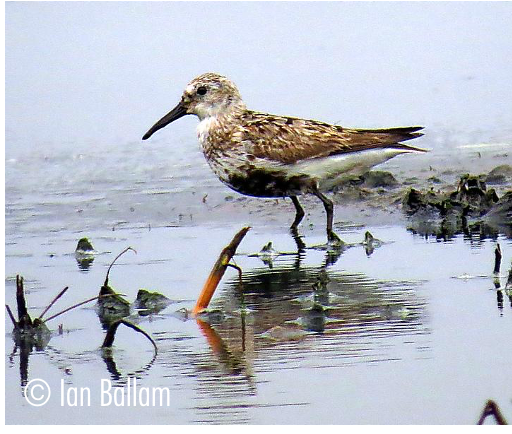
Dunnock
Latin Name
Prunella modularis
Status
Resident
Site And Records Information
An abundant species throughout the harbour found in any woodland, garden, scrub, coastal, heathland habitat. Probably some passage during the autumn with migrants having been logged at Ballard and South Haven in the past.
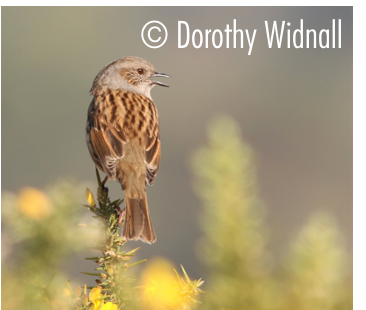
Egyptian Goose
Latin Name
Alopochen aegyptiaca
Status
Scarce Feral Visitor
Site And Records Information
This increasing feral wanderer could potentially turn up at any wetland site, but wet areas such as Lytchett Bay, Middlebere, the Frome and Piddle Valley and Swineham all hold recent records. Could become more regular with 120 in the Avon Valley in winter 2018. It’s not clear if all birds reaching Poole Harbour are local escapes or wanderers from feral breeding populations, but some look rather suspect in their origins with white heads and ‘farmyard’ appearances. Early records consisted of 1 at Wareham on 16th April 1982. 1 on Brownsea on 23rd July 1993 which was also seen in Poole Park. 1 was found at Swineham on 16th December 2002 and was still present the next day. Since 2015 records have become far more regular with a semi-resident pair hanging around Holme Lane/Swineham and Sunnyside.
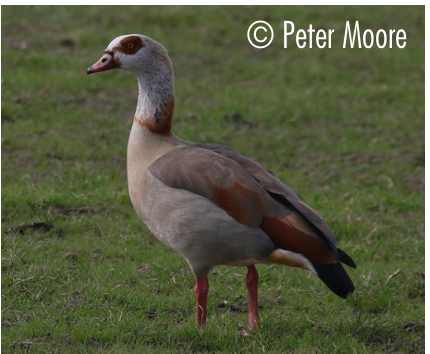
Eider
Latin Name
Somateria mollissima
Status
Winter Visitor
Site And Records Information
Eider used to be present most winters in Poole Harbour but over the last decade has seen a considerable drop in records with the current 5-year winter average being only 1 per winter!
A flock of 20 summered at Pilots Point in 1983 and they were not recorded much before 1950, as A J Bull wrote in the 1961 Bird Report “42 were counted on Hook Sands in Poole Bay on December 31st by Helen Brotherton. It is worth noting that the Eider was still considered a “rare vagrant” in Dorset in 1946” . Though it has been seen with increasing frequency during the last decade these figures exceed previous totals. The harbour maximum is 135 in February 1989 and 10 summered in Poole Harbour from June-Sept 1969, and 20 in Studland Bay during the summer of 1976, also 19 in Studland Bay June-Aug 1996.
The 10 year average peak counts 1950 – 2010 are as follows. 1950’s – 7, 1960’s – 22, 1970’s – 28, 1980’s – 39, 1990’s – 14, 2000’s – 8 (However this figure would be half this were it not for the large flock which gathered in the winter of 2002-03. Since then peak counts have been 2010 – 14, 2011 – 6 and 2012 – 2.
When Eider do arrive for the winter Studland Bay, Shell Bay, South Deep, Jerry’s Point, Central Harbour and Brands Bay are all the most suitable sites to look.
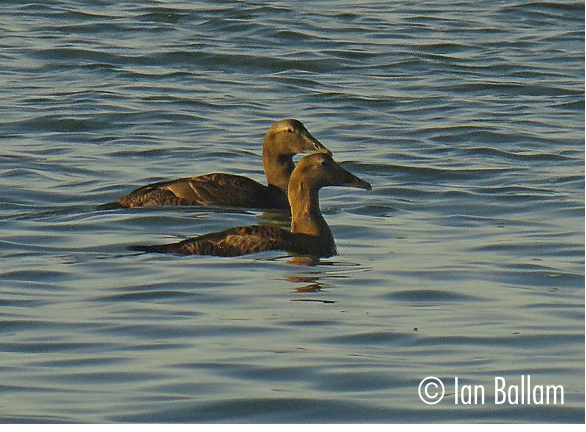
Elegant Tern
Latin Name
Thalasseus elegans
Status
Vagrant
Site And Records Information
A colour-ringed individual which had originally been ringed in France, with DNA analysis also being carried out confirming the bird was indeed 100% Elegant Tern, and hadn’t hybridised with Sandwich Tern.
1 Adult on Brownsea Lagoon 21st June 2017 (H.Murry et al)
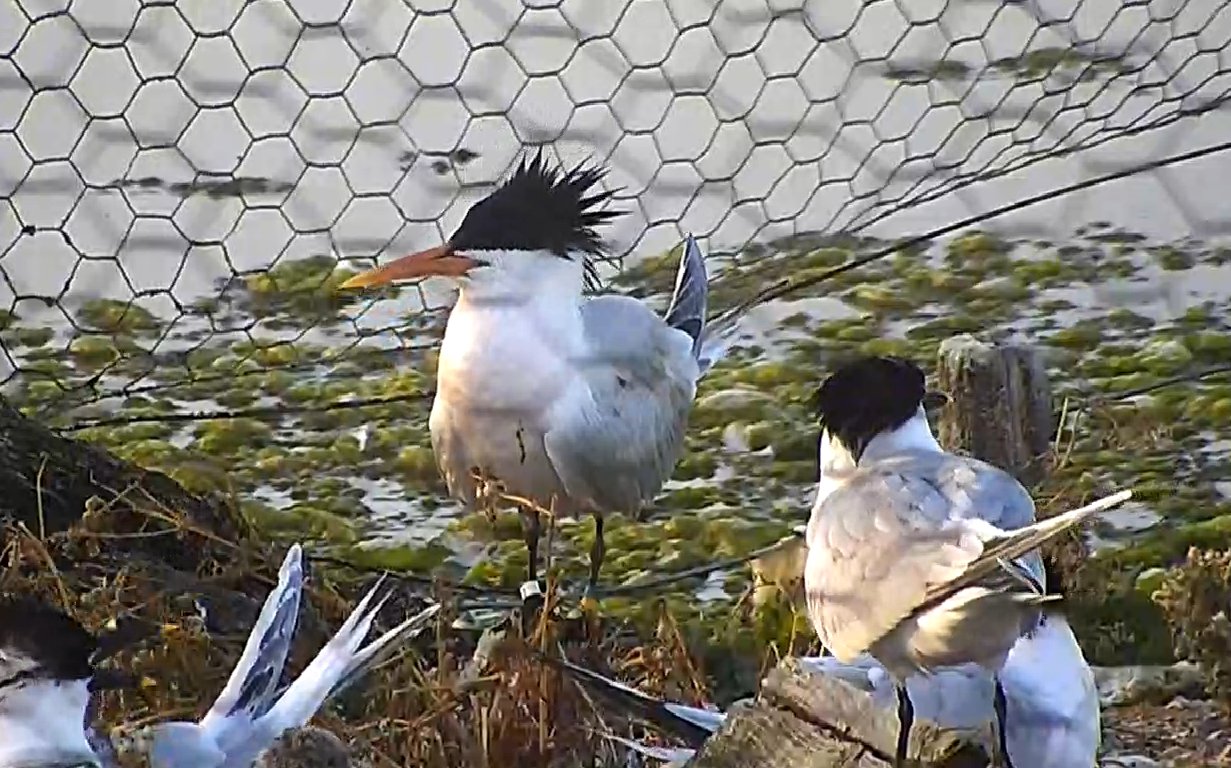
Feral Pigeon
Latin Name
Columba livia
Status
Resident
Site And Records Information
Common in and around the urban areas in the north of the harbour. Poole Quay, Poole High Street and Poole Park. Surprisingly rare on the southern shores.
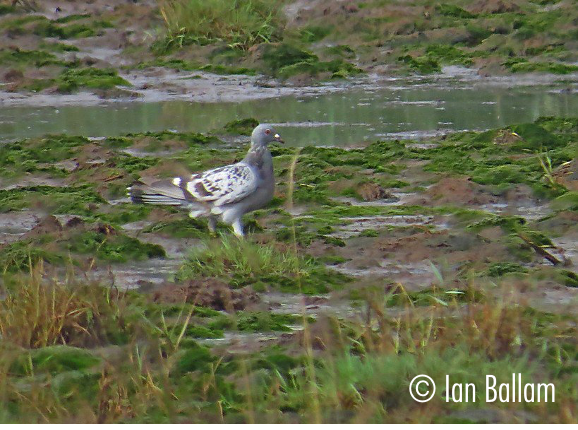
Ferruginous Duck
Latin Name
Aythya nyroca
Status
Vagrant
Site And Records Information
This small and rare duck from central and south-eastern Europe is now a regular feature on UK water bodies. With a reintroduction program in Germany too it’s likely we’ll begin seeing more records of ‘Fudge Duck’ over the coming years. To date there have been five Poole Harbour records.
1 female on the 24th Aug 1977 at Middlebere
1 female on 8th Jan 1979 at Poole Park
1 female on 21st Apr 1981 at Little Sea, Studland
1 adult male on 4th – 6th Jan 2003 at Little Sea, Studland (G. Walbridge et al). This bird was a regular feature at Morden Park Lake in winter from 1997. It had first been seen there in 1994. This was its first and only foray in to Poole Harbour.
1 male on 13th Oct 2006 at Little Sea, Studland (G. Armstrong, I. Prophet).
Fieldfare
Latin Name
Turdus pilaris
Status
Passage Migrant & Winter Visitor
Site And Records Information
Fieldfare begin to arrive in mid-October, increasing in numbers into November. The favoured sites are Soldiers Road, Middlebere, Upton Country Park, Arne, Bestwall, in fact anywhere with large fields and berry bushes for them to feed in. Cold weather movements can occur with counts of 20,000+ birds being reported flying over the harbour in a single day. Any records after March are unusual.
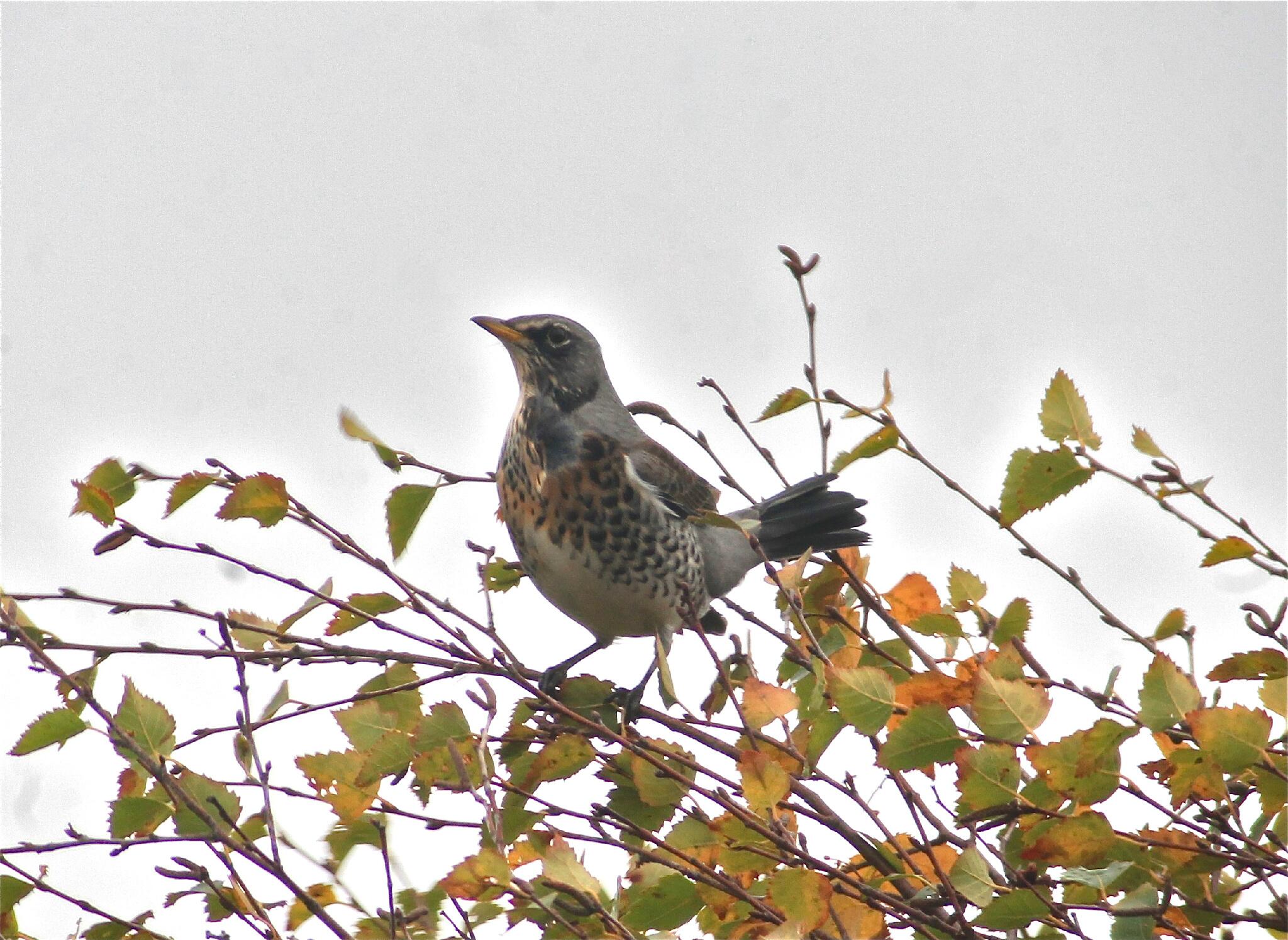
Firecrest
Latin Name
Regulus ignicapilla
Status
Scarce Resident
Site And Records Information
Most easily found in March and October/November when the breeding population is supplemented by migrants. Studland, Arne and the southern-most areas of the harbour seem to be popular but Upton CP, Lytchett Heath and Bay, Fleets Corner and even Poole Park see them during October. Can now be found across the harbour during winter. Holly and ivy being a favoured habitat. Recent breeding success at several sites including Arne and Brownsea Island indicate Firecrest are beginning to build a small but growing population within the harbour.
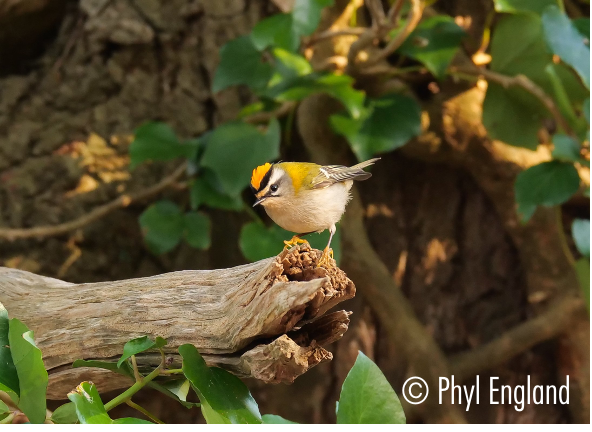
Call 01202 641 003
© 2024 Birds of Poole Harbour Registered Charity No. 1152615

